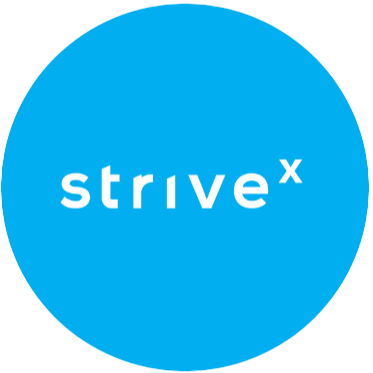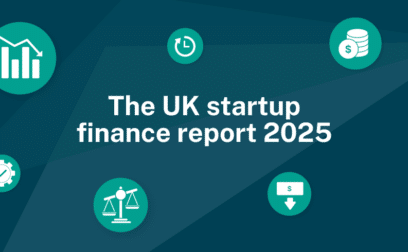If intangible asset finance is not for you, there may be other ways to gain the funds your business needs.
Traditional debt financing
Traditional debt financing means borrowing money from a bank or similar financial institution. Common forms of debt financing include:
Term loans are simplest form of business loan. Borrowers receive a single, lump-sum cash injection of up to £5 million and then pay it back in regular or flexible instalments, plus interest and any fees, over a period of anywhere from 1 to 25 years. Security may be required.
Also known as a revolving credit facility, a business line of credit functions like a high-value credit card. Businesses can withdraw as much as they want when they want from a loan facility up to the agreed limit of their borrowing. Once borrowed funds are paid back, they can usually be borrowed again. Interest rates are typically fixed, and businesses may repay on a set or ad-hoc schedule. Security may be required.
Equity financing
Equity financing is the process of raising capital by selling ownership shares in a business to investors. Instead of repaying a loan, the company provides equity holders with partial ownership and potential profits through dividends or capital gains. This form of financing can help businesses fund growth, innovation, or expansion without incurring debt, though it may dilute control among existing owners or founders.
Asset-based lending
Asset-based lending is a type of loan secured by a company’s physical assets, such as inventory, property, or plant and equipment. Lenders use these assets as collateral, which reduces risk and may allow businesses to access funds even when they have weak credit. Asset-based lending is typically used for working capital or cash flow support. No added security required.
Government and public sector support
Government and public sector organisations provide business funding through grants, loans, tax incentives, and guarantee schemes. These programmes can support innovation, research, and growth, particularly for small and medium-sized enterprises. Funding may target specific goals, such as technology development, sustainability, or job creation, and often involves lower interest rates or, in the case of a business grant, no repayment at all.
Be aware that there is often stiff competition for this type of funding. Additionally, the application process can be slow and difficult, and the pool of available money is usually limited, which could restrict the amount of cash you may receive.
Revenue-based and alternative finance models
Revenue-based financing provides capital to businesses in exchange for a fixed percentage of future revenues. Repayments adjust with income, offering flexibility without giving up equity or ownership. Typical funding models include:
Invoice financing (also known as invoice discounting) allows businesses to borrow against the value of their outstanding invoices. Instead of waiting 30, 60, 90 days or more, release the cash tied up in your unpaid invoices as soon as you issue them – sometimes in 24 hours or less. You retain control of your sales ledger and are still responsible for collecting payment from your customers. This means clients need never know you’re using their invoices to raise funds. No added security required.
Available for businesses that accept customer payments by credit and debit card. A merchant cash advance allows you to to borrow against the value of your card sales. As card sales increase, so your borrowing limit goes up. The loan is paid back via a fixed percentage of card sales on a daily, weekly or monthly basis. The sales act as security for the loan. No added collateral required.
Alternative financing models include:
Available via various online platforms, crowdfunding can provide the cash you need if your presentation hits the right spot. Although it may be tough to raise large sums in small donations from hundreds of donors, the cash is essentially free as there is no interest to pay, and you don’t need to repay the money if you spend it where you said you would. An eye-catching idea and a powerful pitch are essential to succeed with this funding option. Security is not required.
- Peer-to-peer (P2P) lending is a method of borrowing money directly from individual investors through an online platform, bypassing traditional lenders such as banks. Businesses apply for loans, and lenders may choose to fund them, often in small amounts across multiple loans. Although this lending method can be time-consuming for borrowers, it may offer access to funds when businesses are unable to obtain other types of business loan. Security may be required.
Strategic partnerships and corporate investment
Strategic partnerships and corporate investments can offer SMEs vital funding by connecting them with larger companies seeking innovation, technology, or market expansion opportunities. Through collaborations, joint ventures, or corporate venture capital, small and medium-sized businesses can gain financial backing, mentorship, and access to new markets or supply chains. In many cases, these partnerships can go beyond funding, providing valuable technical expertise and strengthened credibility.
Internal financing options
Internal financing means generating funds from within the business rather than relying on external investors or loans. Tactics include reinvesting profits, managing working capital more efficiently, selling non-core assets, or reducing costs to free up cash. These methods can help to maintain full ownership and avoid debt obligations. By strengthening financial discipline and improving liquidity, internal financing allows SMEs to support growth, invest in innovation, and build long-term financial stability without external dependency.







































 yet? Register here!
yet? Register here!